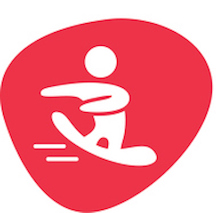
With the 2018 Winter Olympic around the corner, we pulled together a handy snowboarder-friendly guide to the games.
While snowboarding may be one of the newest Olympic sports, it has quickly become one of the most popular. According to Nielsen ratings, snowboarding was the 4th most popular sport ahead of figuring skating at the 2014 Winter Games. This year, with the addition of big air snowboarding, interest in the sport is expected to be at an all-time high.
When are the Snowboard Events at the Olympics?
The snowboarding events at the Winter Olympics will take place February 10, 2018, through February 24, 2018. The 2018 Winter Olympics start February 9, 2018, and ends February 25, 2018, in PyeongChang, South Korea.
What are the Snowboarding Venue?
Big Air will be held in the Alpensia Ski Jumping Centre, while all other snowboarding events will take place at the Bokwang Snow Park.
History of Snowboarding Events at Winter Olympics
Snowboarding is still considered a relatively new snow sport, which began in the 1960s and was recognized as an official sport in 1985 when it held its first World Cup. In 1997, snowboarding was featured in the first Winter X Games.
In 1998 Olympic Games in Nagano, snowboarding was added to the Olympic program with giant slalom and halfpipe events for both men and women. Canada’s Ross Rebagliati won the first-ever gold medal in snowboarding for his win in the men’s giant slalom. At the Winter Olympics in 2002, the alpine event of parallel giant slalom replaced the giant slalom event. Snowboard cross (SBX) made its Olympic debut at the 2006 Games. At the 2014 Winter Games in Sochi, parallel slalom was reintroduced and snowboard slopestyle debuted. Big air will make its Olympic debut in the 2018 Winter Games while parallel slalom was removed from the program. The United States has won the most medals in snowboarding with 24 (10 gold).
Olympic Snowboarding Events
Parallel Giant Slalom
The snowboarders take qualifying runs down a course, making turns around gates. The top 16 men and top 16 women are ranked by their times. They compete in a bracket format based on the rankings. The two snowboarders compete in a two-race match (once on each course). The winner is the snowboarder posting the best total time. The winners of each match move on to the next round until the semifinals. The two semifinals winners compete for the gold (the loser gets the silver) and the semifinals losers compete for the bronze.
Introduced: 1998
Maximum Number of Competitors: 32 men, 32 women
Halfpipe
Athletes perform acrobatic, aerial twists and turns high above the rim of the halfpipe. Each run is scored on a scale of 0.1 to 10.0 by five judges. One judge scores the standardized moves, another scores amplitude (the height of maneuvers), one scores quality of rotations and two score overall impression. For the amplitude score, each maneuver is given an additional point for every 30 centimeters that the competitor reaches above the lip of the pipe. The scores for each maneuver are averaged for the final amplitude score. Deductions are charged for falls and other mistakes.
Number of Competitors: 30 men, 24 women
Introduced: 1998
Snowboard Cross (SBX)
Much like BMX racing, SBX is a group start with a course made up of different sections: whoops (moguls), waves, banks, kickers, and spines (jumps with 90° angles), with a series of blue and red gates and triangular flags marking the course and indicating entrances to obstacles.
Introduced: 2006
Number of competitors: 40 men. 30 women
Slopestyle:
Set on a downhill course, combines aerial tricks and stunts performed on boxes and rails. Snowboarders are not timed but are scored for the difficulty and style of their tricks. The slopestyle course at PyeongChang will feature different takeoffs on at least two jump features.
Introduced: 2014
Number of competitors: 40 men, 30 women
Big Air
Features riders performing a single trick jump. Travelling down a long ramp, they kick into the air to attain maximum height and distance before securing a clean landing. Snowboarders are scored for the difficulty and style of their tricks.
Introduced: 2018
Number of competitors: 40 men, 30 women
Olympic Snowboard Event Schedule
Friday, Feb. 9 at 8:00 pm EST — Men’s Snowboard Slopestyle Qualifying
Saturday, Feb. 10 at 8:00 pm EST — Men’s Snowboard Slopestyle Finals
Saturday, Feb. 10 at 11:30 pm EST – Women’s Snowboard Slopestyle Qualifying
Sunday, Feb. 11 at 8:00 pm EST – Women’s Snowboard Slopestyle Finals
Sunday, Feb. 11 at 11:30 pm EST – Women’s Snowboard Halfpipe Qualifying
Monday, Feb. 12 at 8:00 pm EST – Women’s Snowboard Halfpipe Finals
Monday, Feb. 12 at 11:00 pm EST – Men’s Snowboard Halfpipe Qualifying
Tuesday, Feb. 13 at 8:30 pm EST – Men’s Snowboard Halfpipe Elimination & Finals
Wednesday, Feb. 14 at 9:00 pm EST – Men’s Snowboard Cross Runs
Wednesday, Feb. 14 at 11:30 pm EST – Men’s Snowboard Cross Finals
Thursday, Feb. 15 at 8:00 pm EST – Women’s Snowboard Cross Runs
Thursday, Feb. 15 at 10:15 pm EST – Women’s Snowboard Cross Elimination & Finals
Sunday, Feb. 18 at 7:30 pm EST – Women’s Snowboard Big Air Qualifying
Tuesday, Feb. 20 at 7:30 pm EST – Men’s Snowboard Big Air Qualifying
Wednesday, Feb. 21 at 10:00 pm EST – Women’s Parallel Giant Slalom Qualifying
Wednesday, Feb. 21 at 10:00 pm EST – Men’s Parallel Giant Slalom Qualifying
Thursday, Feb. 22 at 7:30 pm EST – Women’s Snowboard Big Air Finals
Friday, Feb. 23 at 8:00 pm EST – Men’s Snowboard Big Air Finals
Friday, Feb. 23 at 10:00 pm EST – Women’s Parallel Giant Slalom Finals
Friday, Feb. 23 at 10:00 pm EST – Men’s Parallel Giant Slalom Finals
Qualifying for Olympics
Snowboarding is one of the six Olympic sports administered by The International Ski Federation (FIS).
The qualification period for the Olympic snowboard competition officially runs from July 1, 2016, through January 21, 2018. Quota spots are awarded to countries, not individual athletes. The FIS points list from the qualification period determines the nations allocated an Olympic quota spot. South Korea, the Olympic host country, is automatically granted one quota place for every snowboarding event. Countries earning quota spots have their own processes to select athletes for their respective quota spots. Most countries will announce their official teams on January 22, 2018
Snowboard Competition
At the 2018 Olympic snowboard competition, a maximum of 258 snowboarders (142 men, 116 women) compete. At 2014 Winter Games, 243 snowboarders from 31 nations competed. Each event has a maximum number of athletes who may participate. Each nation can send up to 26 snowboarders, with a maximum of 14 men or 14 women. A nation may have no more than four athletes compete in any one event. All participating athletes must have been born before January 1, 2003.
Olympic Snowboarders to Watch
Here are the expected competitors for the 2018 Olympic Games:
Men’s Halfpipe
- Ben Ferguson, United States
- Jake Pates, United States
- Shaun White, United States
- Ayumu Hirano, Japan
- Taku Hiraoka, Japan
- Scotty James, Australia
- Iouri Podladtchikov, Switzerland
Men’s Slopestyle/Big Air
- Chris Corning, United States
- Red Gerard, United States
- Kyle Mack, United States
- Yuki Kadono, Japan
- Marcus Kleveland, Norway
- Mark McMorris, Canada
- Tyler Nicholson, Canada
- Max Parrot, Canada
- Staale Sandbech, Norway
- Sebastien Toutant, Canada
- Sven Thorgren, Sweden
Men’s Snowboard Cross
- Alex Deibold, United States
- Nate Holland, United States
- Hagen Kearney, United States
- Alex Pullin, Australia
- Pierre Vaultier, France
- Omar Visintin, Italy
Men’s Parallel Giant Slalom
- Nevin Galmarini, Switzerland
- Benjamin Karl, Austria
- Zan Kosir, Slovenia
- Andreas Prommegger, Austria
- Vic Wild, Russia
- Radoslav Yankov, Bulgaria
Women’s Halfpipe
- Maddie Mastro, United States
- Kelly Clark, United States
- Chloe Kim, United States
- Liu Jiayu, China
- Torah Bright, Australia
Women’s Slopestyle/Big Air
- Jamie Anderson, United States
- Anna Gasser, Austria
- Hailey Langland, United States
- Julia Marino, United States
- Silje Norendal, Norway
- Spencer O’Brien, Canada
- Katie Ormerod, Great Britain
Women’s Snowboard Cross
- Belle Brockhoff, Australia
- Lindsey Jacobellis, United States
- Michela Moioli, Italy
- Eva Samkova, Czech Republic
- Chloe Trespeuch, France
Women’s Parallel Giant Slalom
- Julia Dujmovits, Austria
- Patrizia Kummer, Switzerland
- Ester Ledecka, Czech Republic
- Tomoka Takeuchi, Japan
- Alena Zavarzina, Russia
Watching Olympic Snowboarding Events
Here’s how you can watch this year:
TV: The games will be broadcast on TV on NBC, NBCSN and across the NBC Universal networks including CNBC, MSNBC and USA Network. For the first time, the network will broadcast all events live in all time zones.
Online or Mobile Device: The games can also be live-streamed or watched on demand on NBCOlympics.com, as well as on the NBC Sports app.
When planning to watch the snowboarding events at the Winter Olympics, remember South Korea is 13 hours ahead of New York, 14 hours ahead of Chicago and 16 hours ahead of Los Angeles.[/fusion_text][/fusion_builder_column][/fusion_builder_row][/fusion_builder_container]


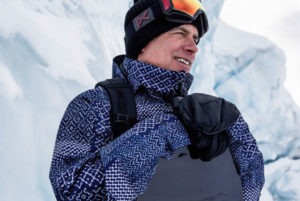

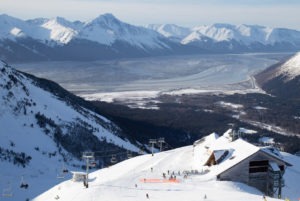
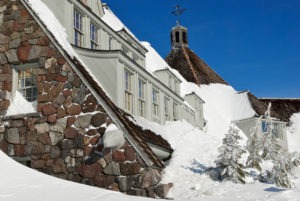
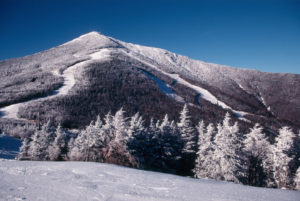
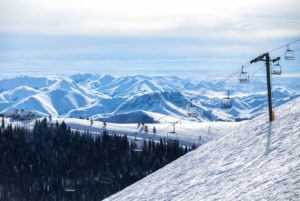
what helmet did marcus kleveland wear in slopestyle final?
That is a custom Sweet Protection helmet. https://sweetprotection.com/sp_us/
What helmet did Marcus Kleveland wear at the 2018 slopestyle final (blue with Norwegian flag)?
That is a custom Sweet Protection helmet. https://sweetprotection.com/sp_us/